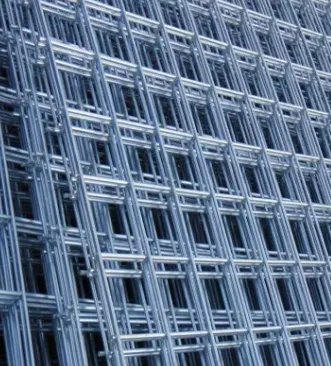Understanding Platform Grating Weight Importance and Applications
Platform grating plays a crucial role in various industrial and architectural applications, serving as a primary support system and facilitating safe footing for personnel and equipment. The weight of platform grating is an essential factor to consider when assessing its overall performance, load-bearing capacity, and installation requirements. This article aims to explore the importance of platform grating weight and its implications across different sectors.
What is Platform Grating?
Platform grating is typically made from materials like steel, fiberglass, or aluminum, designed in a grid-like pattern to provide structural integrity while allowing the passage of light, air, and drainage. Commonly used in walkways, platforms, and industrial floors, the choice of material significantly affects the weight of the grating.
Weight Considerations in Design
The weight of platform grating is influenced by its material, thickness, and design. For example, steel grating is heavier but offers superior strength and durability compared to fiberglass alternatives. When designing a platform, engineers must consider the total weight of the grating along with any potential load it will bear, including personnel, equipment, and environmental factors like snow or rain.
Selecting the right weight of grating is essential for ensuring safety and compliance with building codes and standards. Overlooking weight considerations can lead to severe structural failures, posing risks to safety and resulting in costly consequences for businesses.
Load-Bearing Capacity
platform grating weight

Another critical aspect linked to platform grating weight is its load-bearing capacity. Each type of grating is designed to handle specific loads, determined by factors including the material used, bar spacing, and overall design configuration. The heavier the grating, the more load it can typically support, but this is not always a direct correlation.
For instance, lightweight aluminum grating can be engineered to bear considerable loads while remaining easy to handle and install. Understanding the balance between weight and load-bearing capacity is vital in applications such as construction, where heavy machinery must traverse temporary platforms.
Applications in Various Industries
The implications of platform grating weight are paramount across numerous sectors. In the construction industry, ensuring the right weight and material choice can lead to enhanced safety and productivity on job sites. In the oil and gas sector, platform grating is essential for maintaining safe drilling platforms, where load-bearing capacity is crucial due to heavy equipment and personnel movements.
Moreover, in wastewater treatment facilities, grating must not only support heavy loads but also resist corrosion from harsh chemicals while maintaining a lightweight profile for easier installation and maintenance.
Conclusion
Understanding platform grating weight is essential for engineering design, safety, and application across various industries. By carefully considering the weight and its implications for load-bearing capacity and material choice, engineers and decision-makers can ensure safer, more efficient, and sustainable platform solutions. As industries evolve, ongoing innovations in materials and design are likely to enhance the functionality of platform grating, making it an ever more critical component in structural engineering and safety management.
-
Why Galvanized Trench Cover Steel Grating Resists Corrosion
NewsJul.10,2025
-
The Versatility and Strength of Stainless Expanded Metal Mesh
NewsJul.10,2025
-
Load Calculations in Steel Grating Platforms
NewsJul.10,2025
-
Keeping Pets and Kids Safe with Chicken Wire Deck Railing
NewsJul.10,2025
-
Hole Diameter and Pitch for Round Perforated Metal Sheets
NewsJul.10,2025
-
Aluminium Diamond Mesh in Modern Architecture
NewsJul.10,2025
Subscribe now!
Stay up to date with the latest on Fry Steeland industry news.

